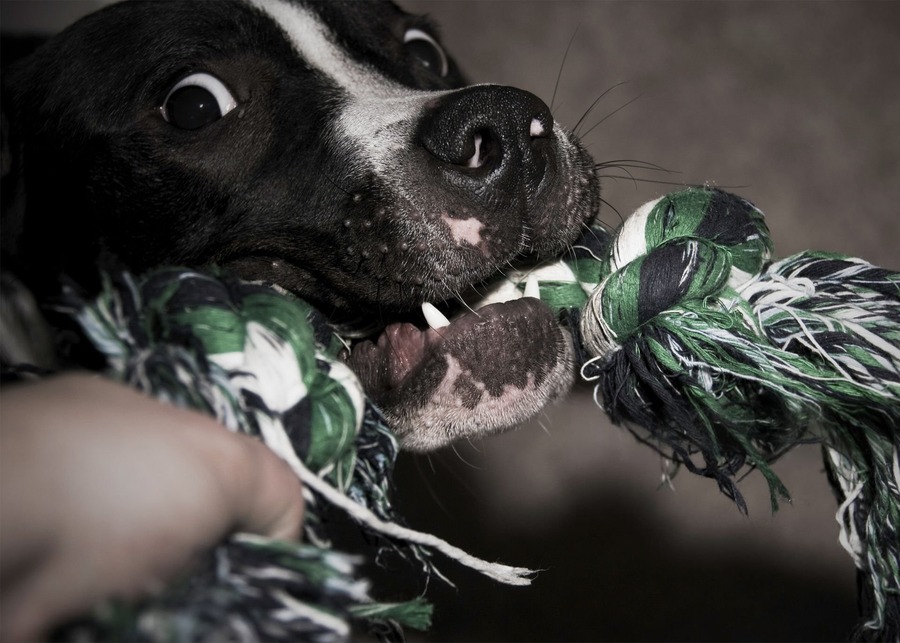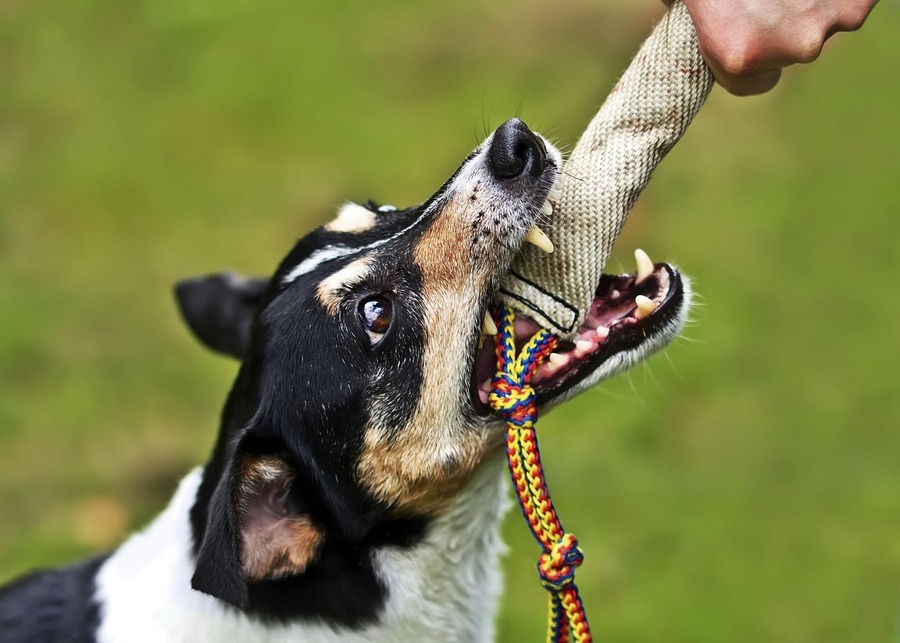Your brand has a great idea for a dog toy, but you’re haunted by reviews of competitors’ toys being destroyed in minutes. You need a guide from the factory floor.
This is a manufacturer’s deep-dive for brand owners, buyers, and product designers. It reveals how to balance materials, structural engineering, and interactive design to create a durable, profitable toy that stands up to the market’s toughest critics: aggressive chewers.
This guide isn’t another "Top 10" list for pet owners. This is for you—the brand founder, the procurement manager, the product designer. We’re opening our playbook, based on over a decade of manufacturing experience, to show you how to build a blockbuster product. We’ll go beyond simple material choices and explore the engineering and design philosophy required to win in this demanding market. Let’s start by understanding the scale of the opportunity you’re looking at.
Why is this a market opportunity?
Feeling the pull of the aggressive chewer market but can’t quite grasp its size? Ignoring this niche means leaving significant profit and brand loyalty on the table for competitors.
This is a prime market opportunity driven by the "pet humanization" trend. Owners see their dogs as family and will pay a premium for toys that ensure both safety (durability) and mental stimulation (interaction), leading to high margins and repeat business.

Don’t just look at market size reports and growth percentages. The real story is in the changing relationship between people and their pets. Today’s pet owners aren’t just buying "chew things"; they are investing in enrichment tools for a beloved family member. They are actively seeking solutions for their dog’s boredom, anxiety, and destructive chewing habits. This shift in consumer mindset is powerful. It means they are willing to pay more for a toy that solves these problems effectively. A high-quality, durable interactive toy isn’t a one-time purchase. It becomes a trusted tool in the owner’s daily routine. This builds incredible brand loyalty. When you successfully create a toy that lasts, you’re not just selling a product; you’re selling peace of mind. This translates directly into a stronger brand reputation, higher customer lifetime value, and a healthier profit margin for your business.
What materials balance durability and safety?
Confused by the endless material options, from natural rubber to complex polymers? A wrong choice can lead to product failure, bad reviews, and even safety recalls that can damage your brand.
The secret isn’t one "perfect" material, but a strategic selection. Natural rubber offers bounce and durability, TPR provides flexibility for puzzles, and food-grade nylon withstands extreme chewing, ensuring a safe and lasting product.
Becoming a knowledgeable buyer means understanding the trade-offs. We don’t just pick the "toughest" material; we select the right material for the toy’s specific function. Think of it like building a high-performance car—you wouldn’t use the same material for the tires as you would for the engine block. We approach toy design with the same engineering mindset. To make this clearer, we use a decision matrix to guide our material selection process with clients. It helps us have a structured conversation about balancing performance with cost.
| Material | Durability | Safety (FDA-Grade) | Cost-Effectiveness | Key Feature | Best For… |
|---|---|---|---|---|---|
| Natural Rubber | Very High | Excellent | Moderate | Bounce & Tear-Resistance | Classic chew toys, balls, heavy-duty treat dispensers. |
| TPR | High | Excellent | High | Softness & Flexibility | Interactive puzzle elements, treat-hiding flaps, toys for moderate chewers. |
| Nylon | Extreme | Excellent | Moderate-High | Hardness & Abrasion-Resistance | Indestructible-style toys for the most powerful chewers. |
| Plush Fabric | Low-Moderate | Varies | Low | Softness & Coddle Factor | Not for aggressive chewers, unless using durable body fabrics like canvas or Oxford cloth, often combined with a reinforced inner liner. |
By analyzing these factors, we can recommend a material composition that delivers the desired durability without compromising on safety or breaking your budget. This technical expertise is the foundation of a successful product.
What design makes a toy truly chew-proof?
Has your brand launched a toy that looked tough but was quickly torn apart at the seams? This common failure happens when the focus is only on material thickness, not on smart structural engineering.
A truly chew-proof design comes from unibody (one-piece) molding. This eliminates glued seams and weak joints, which are the primary failure points. It’s about creating a single, solid form that distributes bite force evenly, rather than letting it concentrate on a weak spot.
Think about it this way: a chain is only as strong as its weakest link. In toy manufacturing, glued seams or snapped-together parts are those weak links. An aggressive chewer’s jaw is incredibly efficient at finding these vulnerabilities and exploiting them. Our design process starts by eliminating them entirely. We champion unibody construction, where the entire toy is created from a single mold. This process avoids the need for adhesives or mechanical joints that can be pried apart. But we go deeper. We analyze the geometry of the toy to identify potential "stress concentration points"—sharp internal corners or thin sections where bite force naturally focuses. We then engineer solutions, like adding internal "reinforcing ribs" or designing smoother, rounded curves that help dissipate the pressure across the entire toy. It’s a proactive approach to durability that happens long before the first prototype is even made. This is the difference between a toy that looks tough and one that is engineered to be tough.
How do you solve the fundamental conflict between ‘fun’ and ‘durable’?
Does this sound familiar? You design a brilliant toy with clever moving parts and hidden treat compartments, only for it to be shredded in minutes. This is the core conflict of our industry.
The conflict is real because interactive features often create structural weak points. The solution is not to sacrifice fun, but to integrate the interactive elements directly into the toy’s core, unibody structure, rather than attaching them as fragile, separate components.

Let’s be honest about the central challenge. The moment you add a flap, a slider, or a separate piece to a toy to make it "interactive," you’ve created a target for a powerful chewer. You’ve introduced a seam, a hinge, or a gap—an invitation for destruction. We call this the "Fun vs. Durable Dilemma." Many brands try to solve it by simply making the parts thicker, but this often fails because the connection point is the inherent weakness. The fundamental flaw is thinking of the "fun part" and the "durable part" as two different things that need to be joined together. Our philosophy is different. We believe the most successful designs make the durable structure itself the source of the fun. This requires a shift in thinking, moving away from complex mechanisms and towards clever, integrated designs.
What clever designs can make interactive features more durable?
So, if attached parts are the problem, how can you create an engaging puzzle toy that lasts? It feels like an impossible task, but the solution lies in clever engineering, not complexity.
Durable interaction is achieved with smart design. We use techniques like embedding puzzle pathways within a solid structure, utilizing the material’s own flexibility for treat-hiding, and guiding a dog’s chewing away from the most critical areas.
This is where our ODM expertise truly shines. We solve this problem for our clients every day by using a few core design principles.
-
Embedded Design: Instead of adding a fragile door or lid, we design the puzzle into the toy. Imagine a solid rubber cube with a maze-like channel carved into its interior. The dog must roll and manipulate the entire, durable object to get the treat out. The puzzle is inseparable from the structure.
-
Material-Based Puzzles: We leverage the properties of the material itself. For example, instead of a hard plastic latch, we use high-elasticity TPR to create tight, flexible slits or fins that a dog must work to push past to get a reward. The "mechanism" is just a property of the super-durable material.
-
Behavioral Guidance: We use texture to our advantage. By designing specific deep grooves and appealing textures on the strongest parts of the toy, we can actively encourage the dog to focus its chewing there, naturally drawing its attention away from more functional (and potentially less durable) areas.
A North American client recently came to us to develop a "satellite" themed toy. They wanted it to have "solar panels" that could hide treats. A traditional hinged design would have been destroyed instantly. Our solution was to create a unibody sphere with deep, flexible grooves molded into the sides to act as the "panels." Treats could be wedged deep inside, and the dog had to chew and manipulate the flexible material to release them. The fun was integrated, not attached.
Where is the next innovation trend for durable interactive toys?
You’ve mastered materials and design, but what’s next? Staying ahead means looking at where the market is going, not just where it is now. Complacency is the enemy of growth.
The future is not just about making toys tougher. The next big innovations lie in two key areas: sustainable materials that enhance brand storytelling and smart technology that creates entirely new, data-driven service models for pet wellness.
The next generation of winning products will connect with consumers on a deeper level. Here’s where we see the most significant opportunities:
-
Sustainability as a Brand Story: The demand for eco-friendly products is no longer a niche. For pet brands, this is a golden opportunity. A durable toy made from recycled, ocean-bound plastic or other sustainable materials isn’t just a product; it’s a powerful marketing narrative. It allows you to build a brand that consumers feel good about supporting, justifying a premium price point and fostering a community around shared values. This is not just a material swap; it’s a strategic rebranding.
-
Data-Driven Smart Toys: The "smart toy" trend is evolving beyond simple app-controlled movement. The real frontier is data. Imagine a durable chew toy that contains a sensor to track a dog’s chewing duration, frequency, and bite pressure. This data can provide owners with unprecedented insights into their pet’s dental health, anxiety levels, or boredom. This opens the door to new business models, like a subscription service that provides wellness reports and tailored advice based on the data your toy collects. The toy becomes the gateway to a long-term service relationship.
Whether the future is green or intelligent, one thing is certain: turning these innovative concepts into reliable, mass-produced realities requires a manufacturing partner with forward-thinking R&D capabilities. At Preeminent, we are actively exploring these frontiers, ready to help you build the next big thing in pet enrichment.
Conclusion
Building a successful, durable interactive toy is a science. It requires a partner who deeply understands materials, structural engineering, market trends, and your brand’s vision. We are that partner.


